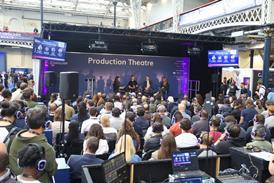The purchase of the DSF-3 units ensures that the three-dimensional sound picked up by the DSF-2 microphone follows a completely digital signal path from the point of capture to the final HD broadcast.
The deal follows a technical trial that took place during the Sky's coverage of a Premier League football match between Chelsea and Liverpool at Stamford Bridge in February.
The digital DSF-3 bypasses the need for Sky to convert a digital output from the DSF-2 into an analogue signal for decoding to 5.1 and then reconvert back to digital for final transmission.
Without the DSF-3 processor the only way to obtain 5.1 surround from the DSF-2 for HD broadcast would be to process its output using SoundField's SP451 decoder.
Keith Lane, operational manager at Sky Sports, signed the sales order.
He said: "For the Chelsea-Liverpool game, we split the signal from the DSF-2, running it through the new DSF-3 and also via our usual SP451 unit. The idea was to use the DSF-3 feed for the HD broadcast of the match if everything went according to plan, but we had the option of using the feed through the SP451 if anything went wrong.”
The DSF-2 is SoundField's first fully digital microphone. Launched in 2006, its multi-capsule head provides a multi-channel output signal in a proprietary format that can be decoded with SoundField hardware or software into a variety of audio formats, including mono, stereo and 5.1 surround sound.
SoundField managing director Ken Giles said: "Not only can we now offer our existing valued DSF-2 customers an improved, all-digital system for 5.1 audio capture, the DSF-3 also makes our digital microphone system more attractive to new customers."
The Soundfield microphone is an audio microphone composed of four closely spaced subcardioid (unidirectional) microphone capsules positioned in a tetrahedron. It was invented by Michael Gerzon and Peter Craven, and is a part of, but not exclusive to, Ambisonics, a surround sound technology. It can function as a single microphone, a stereo microphone or as a surround sound microphone. [From Wikipedia]





























No comments yet